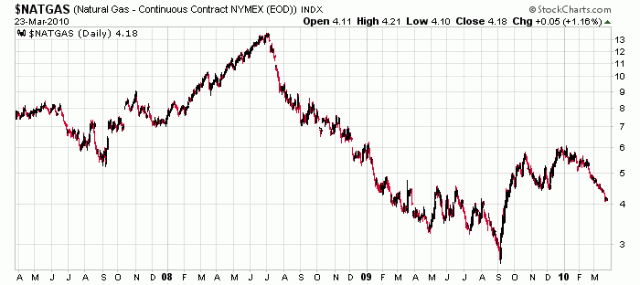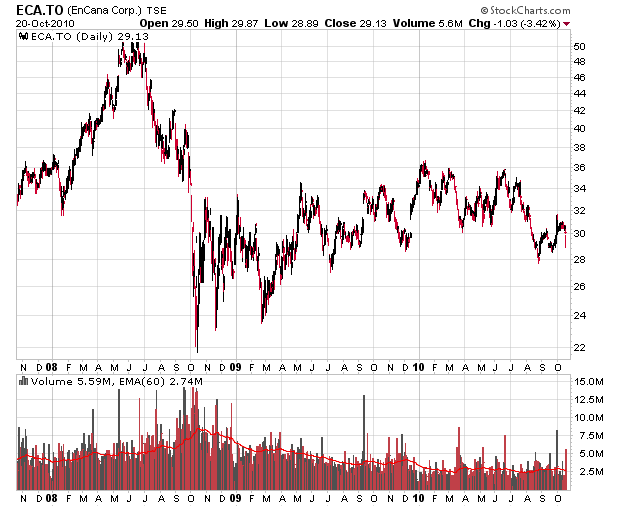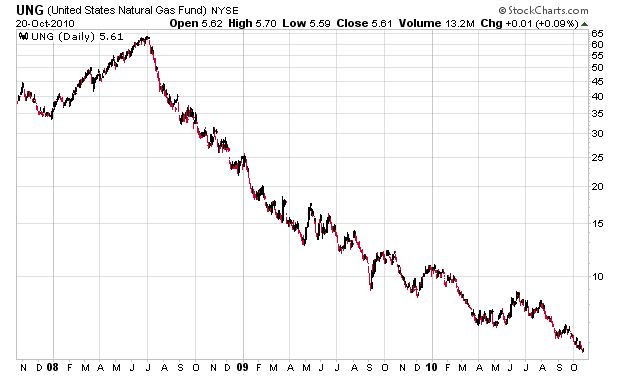The “discovery” of economical shale gas mining has done an extraordinary job of depressing natural gas prices since the price shock of 2008:

It is noted that the spread between crude oil and natural gas prices have reached an all-time divergence, but this is likely to be temporary – it will just be a matter of time before the laws of supply and demand force effective conversion between the two commodities. For example, it makes it more economical to use a higher natural gas input to achieve an output of crude given the price spread. Activities such as tar sands mining are very intense on natural gas (to generate steam) and as a result, the market should equalize over time.
One of the worst ways of playing natural gas is by purchasing a Natural Gas ETF (UNG), as it does not actually hold the physical commodity – traders will eat away at the fund when it has to rollover its futures contracts. Even purchasing calling options or the futures directly still exposes you individually to rollover risk. You could buy long-dated futures, but there is very little liquidity in the marketplace and you pay a significant premium, as the market is anticipating future price increases.
The only real way for people to play natural gas on a long-term basis are to purchase producers with considerable reserves. Which producers to pick is a matter of risk tolerance and market pricing. Typically if an investor wishes to be fancy, they would ideally pick a producer that has a marginal cost structure such that the cost to produce natural gas is that of the present market price; such a company will be losing significant amounts of money and will be trading at depressed valuations. Assuming this is the case and assuming the market has significantly marked down the equity in such a money-losing company, it is a very speculative way of playing for a natural gas price increase.
This principle also works with any other commodity on the planet – including crude oil and gold companies. Again, it depends on doing your homework with respect to valuations and knowing what value you are receiving when you put in the order for shares.
A more conservative strategy and one that relies on other market participants to have done their homework to receive a fair price is to purchase shares in EnCana or Canadian Natural Resources, which are the top two natural gas producers in Canada. After the split-up of EnCana and Cenovus, EnCana is a much more “pure play” on natural gas than Canadian Natural Resources. With either company you will not see your money double over the course of a year or two, but it will certainly be there at the end of the day and also provides a bit of comfort with respect to inflation-proofing a portfolio. Despite all of the media and political attention paid to carbon emissions, it is a given that natural gas and crude oil continue to be consumed in massive quantities for the foreseeable future. The only promise is that, over the long run, it will get more expensive.



